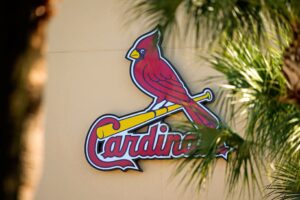I am a cheater. I confess to cheating during JUCO sanctioned games in the mid-80’s by stuffing two tennis balls into the barrel of my old green Easton 35/31. The balls were spaced to roughly frame the sweet spot of the bat. A little super glue sealed the cap back on and I went on to bat near-.600 for a weekend series. Six minor league scouts were there to watch a few players that didn’t have my last name. In spite of my own cheating in baseball, it didn’t get me signed. I also masterminded a ball-scuffing caper where I, as their catcher, did the dirty work for my pitchers with an upholstery tack in the waistband of my uniform. There was even an occasion where one pitcher was nearly completely undressed by umpires looking for how he was doing it.
Witness to a Scandal
In 1990 I lived outside Baltimore. I got a call from a friend asking if I’d like to go to the Baltimore Orioles–Oakland A’s game that evening. He had a former college teammate that was with the A’s and we’d hang out with him after the game. Needless to say, I accepted and that evening is when I met Doug Jennings. After the game the three of us sat in the lounge of the hotel where the A’s were staying. We sat at a table while Tony La Russa, Dave Parker, Terry Steinbach, and others milled around. Dave Henderson stopped by and chatted for a few minutes. Then Jose Canseco walked by.
My friend and Jennings exchanged awkward nods which I didn’t get. When I asked my friend looked at Jennings and said, “Is it true?” Jennings softly said, “Yeah, he’s on the juice.” I knew that “the juice” was steroids. The drugs had been around even the collegiate levels I had played in. I didn’t think much of it at the time. After all, anyone using was just trying to get an edge in the competition. I had done things myself, just not that extreme. Little did I know that sixteen years later performance enhancing drugs would be an explosive episode of cheating in baseball.
Chemistry At Work
The exploits of BALCO, Biogenesis and their clients are thoroughly documented. The Mitchell Report laid it all out in detail. The effects of their presence in the game linger even today. Watching the likes of Barry Bonds, Mark McGwire, Sammy Sosa, and Roger Clemens twist in the wind during Hall of Fame voting has become an annual event. Yet there is evidence that PEDs were common knowledge beyond just a hushed secret among players. Former big leaguer and current Boston Red Sox broadcaster Lou Merloni has stated as much. According to Merloni, the team once held a meeting during spring training where a doctor instructed he and other players on how to use steroids safely.
Other drugs have been part cheating in baseball as well. The great Willie Mays regularly had a liquid form of amphetamine in his locker and openly talked about his use of it. Presence and use of pills known as “greenies” is a long-known truth of the game. The effect of amphetamines as performance enhancers is still in debate. But ask yourself why Mays and numerous other players used them. Chris Davis of the Baltimore Orioles advocated for his use of Adderall, a drug along the lines of amphetamines often prescribed for addressing ADHD. Davis believes the drug aided his ability to concentrate and think clearly.
They Saw The Sign
No matter what form cheating in baseball takes, it’s all about gaining an edge. It often starts with individual players and proliferates through success and trusted bonds. Those bonds were most recently shattered by Mike Fiers, who blew the whistle on sign stealing by the Houston Astros. That cheating went on even while other organizations complained repeatedly. When Fiers finally made the practice public, Carlos Beltran, Alex Cora, AJ Hinch and Jeff Luhnow all lost their jobs for their roles in the scandal.
Another famous alleged sign stealing scandal circles around Bobby Thomson‘s “Shot Heard Round The World”. The third baseman’s pennant winning walk off home run in 1951 is baseball legend. However, fifty years later, scandal surrounding the iconic homer was confirmed. It’s all detailed in Wall Street Journal reporter Joshua Prager’s 2006 book The Echoing Green. Giants manager Leo Durocher stationed a coach with a telescope in the manager’s office within the building behind the center field fence. Signals to the Giants bullpen were relayed via a wire from the office connected to a buzzer. The Giants backup catcher would then relay the sign by tossing a ball up in the air or not.
Thompson admitted to using the practice during the 1951 season but never divulged if it was used for his historic home run. It’s documented that the Giants began stealing signs in July of that year because they were seven and-a-half games back at the time. Thompson was batting .237 but suddenly got hot and hit .358 for the season’s second half. And the Giants won the pennant. The Giants won the pennant.
Gripping Dilemma
In addition to my own extensive experience of altering baseballs, there is a litany of individuals who have been nabbed and/or suspected of doing so. Improving the grip on a ball has also been a long time effort by pitchers. A better grip puts greater spin on the ball which creates greater and sharper movements on a pitch. Simple scuffs on the surface of a baseball can give a real edge to a pitcher. Recently deceased Hall of Famer Don Sutton was known to use everything from sandpaper to the pitching rubber to scuff the ball. Others like Joe Niekro (sand paper) and Rick Honeycutt (a thumb tack) were famously caught with the tools of the deed on them.
Greater grip on the ball is a scandal in the making today. Trevor Bauer has been an outspoken whistle blower about the use of pine tar by pitchers to get a better grip. That can add as much as 400 RPM to a pitch. The former visiting clubhouse manager of the Los Angeles Angels of Anaheim, Bubba Harkins, recently named some of the biggest pitchers in the game as clients for his custom sticky substance. Gerrit Cole, Max Scherzer and Justin Verlander were among the many names Harkins provided in court last week.
Slick Operator
Dating back to Preacher Roe, who last toed the rubber in 1954, many pitchers used slick substances on the ball. Spitballs were common before being considered cheating in baseball just prior to the 1920 season. A slicker surface on the ball makes it slide off the pitcher’s fingers and the pitch rotates awkwardly or unevenly. That creates unpredictable movement on a pitch. Hall of Famer Gaylord Perry topped them all in this category. Especially later in his career, Perry would go through a routine of quickly touching up to eight places around his head to possibly pick up a slick substance before starting his pitching motion. Hat, neck, ear, nose, forehead, collar, under the chin, grab the ball and pitch.
Fellow Hall Member Reggie Jackson was regularly exasperated with Perry loading the ball with slippery substances. Once while with the Angels, Jackson whiffed on a slickened Perry delivery by about a foot for strike three. Mister October exploded at the umpire to check the ball and Perry before getting himself tossed from the game. Jackson continued his histrionics by pulling a cooler from the Angels dugout and scooping out Gatorade to demonstrate how wet he thought the ball was. And that was just one of the twenty-two times Jackson was victimized by Perry.
Bat Men
Hitters work to gain their own edge in the game. I was a bat stuffer but, amazingly, not the most famous of the ilk. Six-time All-Star Graig Nettles hit 390 career home runs in the big leagues. He will also go down as the most ingenious bat stuffer of all time. In a game against the Detroit Tigers in 1974, Nettles’ broken bat single actually put seven balls into play at the same time. Six of those were rubber superballs that spilled out of his bat when it broke. Nettles was ejected and the single disallowed, but not the home run he hit earlier in that game.
The common, springier substance hitters put inside bats is cork. The practice is said to add up to ten percent to exit velocity and distance. Doubters need only to look at the list of hitters caught doctoring their bats to know there is a reason why it’s banned from the game. Sammy Sosa, Albert Belle, Amos Otis, “Disco” Dan Ford, and Chris Sabo were all either caught or admitted to corking their bats at one time or another. Another means to alter a bat was engineered by newly inducted Hall of Famer Ted Simmons. In 1975, after hitting a home run “Simba” was caught with grooves carved into the barrel of his bat. The grooves were intended to bite into the ball and induce greater spin on it as if flew.
Cheating In Baseball
Cheating in baseball hasn’t always been limited to players. Front office computer hackers, grounds keepers, colluding owners, coaches, managers and even a worker that turned the Metrodome ventilation system on and off at opportune times have cheated. Purists argue that the integrity of the game is always at stake. All while known and admitted cheaters are in the Hall of Fame. A few HOF hopefuls are being denied election due to their association with cheating. Sometimes it triggers outrage, just ask Jose Altuve and Alex Bregman. Sometimes it inspires a rolling of the eyes like Perry did. Occasionally it changes the game itself in big ways like Barry Bonds, Mark McGwire, and Sammy Sosa did.
A real examination of cheating in baseball can only conclude in a single understanding. Cheating is part of the fabric of the game. In a competition where success is oddly measured on not failing rather than succeeding, even the slightest edge can make a huge difference. Today motivations are stronger than ever as players can make life-changing salaries for generations of their families to come. So fans can count on cheating in the game whether we recognize it or not. But before we pass judgement, it’s good for us to think back to when we played the game and our own trespasses against it. If we’ve done it ourselves, at whatever level of the game, we’re no more criminal than the big leaguers we discover who have cheated. We all did it for our own rewards, but, in the end, we just wanted to gain that edge.
Main Photo






